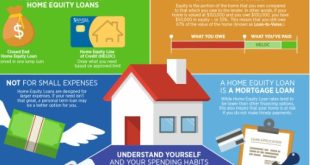Imagine this: you’re craving more space in your home, but the thought of moving feels like a Herculean task. That’s where a home improvement loan can come to the rescue, enabling you to craft an extra room right where you are.
Or perhaps you’ve just unlocked the door to your new home, only to find a few corners crying out for a makeover. Or maybe, you’re planning to pepper in some modernity with a chic kitchen or a sleek bathroom, thereby boosting your home’s value before it hits the market. Whatever your home renovation dreams might be, a home improvement loan can help them take flight.
Transforming your home into your dream space can be an exciting journey, but it often comes with a hefty price tag. If you’ve got a nest egg saved up, you’re in a great position to kickstart your renovation. However, if your bank account isn’t quite ready for the task, you may need to explore borrowing options.
Our detailed guide is designed to illuminate the myriad of ways you can finance a Home Renovation. We’ll delve into what influences the cost of financing a renovation, the pros and cons of different financing strategies and savvy ways to stretch your renovation budget further.
Get ready to dive into the world of home renovation financing! We’re here to guide you on the journey to finding the perfect bank or lender, armed with all the right questions. Plus, we’ll tackle those pressing queries that often pop up during this process. Buckle up and let’s get started!
Exploring Various Financing Options for Your Home Renovation Project
Cash
Imagine dipping into your savings and using that hard-earned money to transform your home. It’s an investment that could be a game-changer.
Why? Because with the right home improvements, you’re not just enhancing your living space, you’re also significantly boosting your home’s value.
Consider this, a stylish new bathroom could potentially hike up your home’s value by 3% to 5%. And that’s just the start, a savvy garage conversion could skyrocket your property value by a whopping 15%!
The beauty of using cash? You steer clear of any interest. You can either tackle your home makeover in phases as you save, or set a budget and kick start the transformation once you’ve hit your target.
And the best part? Once the dust settles and your home improvements are complete, you’ll have zero payments to worry about. Now, how’s that for smart financing?
Unearth the Potential of Loans
Is your dream renovation project on the horizon, but you’re still figuring out how to finance it? Not to worry, taking out a loan could be the solution.
A plethora of banks and lenders offer a trio of loan types designed to fuel your home’s transformation. Here’s what’s on the menu:
- Home improvement loans
- Personal loans
- Secured loans
Below, we’ll delve into the specifics of these loans. For a more exhaustive understanding of securing a home improvement loan, be sure to explore our comprehensive guide.
Remember: this guide is simply a helpful resource. HouseholdQuotes doesn’t provide financial advice or endorse specific lenders. Always scrutinize the full terms and conditions of any financial agreement, including loans or credit cards, before committing.
We maintain affiliate partnerships with some lenders. If you choose to apply for a loan through one of our affiliates, we may receive a small commission, at no extra cost to you.
Home Improvement Loans: A Closer Look
Many financial institutions have tuned in to homeowners’ needs and now offer loans specifically for home improvement. These are typically personal loans, meaning no collateral is required.
What’s more, some lenders offer lower interest rates for home improvement projects compared to other personal loans. They may also give you the flexibility to repay the loan over a slightly longer period. So, you might be able to create your dream home without breaking the bank.
Ready to see what you could potentially borrow? Just click the button below:
Explore Your Options: A Comparison of Home Improvement Loans
Dive into Personal Loans
Imagine a scenario where you can borrow money without offering any collateral. That’s the beauty of personal loans. You borrow a specific amount from the bank and commit to monthly repayments, plus interest, until your debt is cleared.
Typically, these loans range from £1,000 to £25,000, making them a perfect fit for smaller renovations. Whether you’re dreaming of a cosy conservatory, a new driveway, or a bathroom revamp, a personal loan could be your ticket to home improvement.
But remember, interest rates can differ significantly between banks. It’s essential to shop around for the best deal before you commit.
So, where can you apply for a personal loan? Banks or building societies, lenders, or financial brokers are your go-to sources. A good credit rating can enhance your chances of getting a loan, but don’t worry if your credit history isn’t spotless. Some lenders specialize in catering to individuals with less-than-perfect credit.
Unlock Your Home’s Value with Secured Homeowner Loans
Planning a grand project? Perhaps a sophisticated loft conversion, a cosy cellar conversion, or maybe a full-scale home makeover? A secured loan could be your financial ally.
With many financial institutions offering secured loans from £50,000 up to £250,000, and a select few even stretching to £500,000, you can dream big.
One of the attractions of secured loans is the flexibility in repayment terms, often allowing you to spread the cost over a longer period.
However, it’s worth noting that these loans are secured against one of your assets such as your house or car. This means that if you fail to keep up with repayments, you stand to lose the asset.
Though secured loans often come with more favourable interest rates compared to personal or home improvement loans, it’s not a one-size-fits-all scenario. We found notable variations among lenders, reinforcing the importance of diligent research and comparison shopping.
Secured loans can be a beacon of hope for homeowners with less-than-stellar credit, as the security of the loan often encourages lenders to take a chance.
Think a secured loan might be the right fit for your financial needs? Click the button below to discover what you could borrow:
Taking Out a Second Mortgage: What You Need to Know
Are you dreaming of a lavish kitchen extension, a cosy cellar conversion, or a bespoke renovation? A second mortgage could be the golden ticket to make your grand project a reality.
Instead of dipping your toes into the loan pool, why not consider remortgaging your home? This smart move allows you to fold the renovation costs into your mortgage payments, making your dream home an achievable reality.
Imagine having the flexibility to stick to your existing mortgage timeline but with slightly higher payments, or, if you prefer, extending the years on your mortgage to maintain roughly the same repayments you’ve been making before the loan. Sounds like a win-win, right?
Credit Cards
Did you know that your humble credit card could be a secret weapon in financing your home renovation?
Compared to the loan application process, getting a credit card can often be a breeze. Not just that, many banks and lenders roll out the red carpet with tantalizing offers of interest-free credit cards. Imagine this – you could potentially be holding onto a balance for a full year, with zero interest accumulating. Now that’s a deal!
Now, while credit cards provide a handy way to finance your home renovation, they do come with a catch. Their spending limit might not quite stretch to cover your grand home improvement visions.
Moreover, the interest rates they levy can be a tad steeper than what you’d find with bank loans. A word of caution here: if you’re not able to clear your credit card balance monthly, the cost of your home makeover could sneak up on you, potentially snowballing into a financial avalanche.
In a nutshell, credit cards can be a flexible ally in your home renovation journey—if you manage to snag one with an interest-free deal.
At HouseholdQuotes, we’re all about empowering you with knowledge, not dictating financial decisions. We don’t endorse specific lenders or financial products. It’s essential you dive into the nitty-gritty of terms and conditions before signing up for any credit card or loan.
What Factors Influence the Price of Funding Your Home Renovation?
When it comes to financing your home renovation, a multitude of factors can play a part in shaping the final bill. Let’s dive into the elements below that could potentially cause your costs to climb, so you’re well-equipped with the knowledge to navigate this financial journey.
Deciding on Your Financing Path
Did you know that the most cost-effective way to finance your home makeover is by dipping into your savings or leveraging an interest-free credit card? If that’s not an option, don’t worry! You can consider remortgaging your home, especially if you’re looking to borrow a substantial sum. Not to mention, there are always secured and unsecured personal loans at your disposal.
Ready to kickstart your home renovation journey? Click below to discover how much you could borrow:
Determining the Amount You Need to Borrow
Remember, the sum you’re aiming to secure plays a pivotal role in determining your costs. Let’s say you’re dreaming of sprucing up your bathroom with an elegant makeover, and your budget hovers around £10,000. In such a case, an interest-free credit card might be your most cost-effective ally, provided you can repay the borrowed amount within the stipulated timeline.
If that doesn’t seem feasible, don’t fret! Secured or unsecured loans could be your silver lining. Ensure you gather quotes for various loans and meticulously compare their interest rates to land the best deal.
Imagine this: you split your renovation budget between an interest-free credit card and a loan. How much would that cost you? Let’s break it down together.
Understanding Your Earnings and Expenditures
Embarking on a home renovation journey? You’ll need to know that before a lender hands over a loan, they’re going to want a peek at your finances. They’re curious about your earnings and outgoings to evaluate how much you can spare each month post all your expenses. Let’s say, for instance, you apply for a £25,000 loan.
If the bank isn’t convinced that you can comfortably repay this amount, they have a few options at their disposal:
- They might simply refuse the loan— a disappointing, but possible outcome.
- They could stretch your repayment period, effectively reducing your monthly payments— an option that gives you more time, but increases the overall cost.
- Or, they might offer you a smaller amount— a compromise that could still help you get started on your renovation journey.
Understanding Your Credit Score
Before diving headfirst into securing a loan, it’s wise to first take a peek at your credit rating.
Doing this isn’t merely about knowing your credit score. Conducting an annual check reveals any discrepancies or suspicious activities that could be lurking in your report.
You can access your credit report at zero cost with all three credit reference agencies. These include:
- Experian
- TransUnion
- Equifax
Imagine your credit report as a financial storybook, weaving a tale of your fiscal journey. It contains key identifiers like your name, address, birth date, and a verification of your electoral roll status.
As the narrative unfolds, you’ll encounter intriguing chapters on your credit payment history. Uncover details on your outstanding debts, punctuality (or lack thereof) in making payments, and whether you’ve been tagged with a county court judgment (CCJ).
Brace yourself for plot twists as the report reveals whether you’ve performed a fiscal vanishing act by moving out while still in debt, or if your home became the tragic hero, falling into the clutches of repossession.
also unveil whether you have ever been declared bankrupt or if you have an Individual Voluntary Arrangement (IVA) to manage your debts.
Accompanying each report, you’ll find your credit score. Remember, when it comes to credit scores, the higher, the merrier!
It’s important to note that all three agencies initiate from zero and climb upwards, however, they don’t all share the same scoring system.
Let’s illustrate this with an example: A score from 0 to 560 may be classified as poor by Experian, while Equifax sets the poor score range from 0 to 279.
Similarly, a score ranging from 961 to 999 is considered excellent by Experian, whereas Equifax labels a score from 466 to 700 as excellent.
For a clearer understanding, take a peek at the following table that comprehensively presents the scores and what they signify:
Let’s talk credit scores. With Equifax, a score ranging from 0 to 438 is considered ‘Very Poor’, 439 to 530 is ‘Poor’, 531 to 670 is ‘Fair’, 671 to 810 is ‘Good’, and 811 to 1000 is ‘Excellent’. On the Experian scale, if you’re between 0 to 560, it’s ‘Very Poor’, 561 to 720 is ‘Poor’, 721 to 880 is ‘Fair’, 881 to 960 is ‘Good’, and 962 to 999 is ‘Excellent’. Lastly, TransUnion scores fall into ‘Very Poor’ for 0 to 550, ‘Poor’ for 551 to 565, ‘Fair’ for 566 to 603, ‘Good’ for 604 to 627, and ‘Excellent’ for 628 to 710.
What’s cool is that your credit score is usually consistent across all three agencies. So, if you’re rocking a good credit rating with Experian, chances are you’ll see a similar glow-up with your Equifax and TransUnion scores. It’s like a financial hat trick!
Unearthed an error or a hint of suspicious activity on your report? Don’t delay, reach out to the credit agency straight away.
Remember, when you’re applying for that renovation loan, your lender will pull up your credit report. They’ll get a detailed view of your credit history, so keep it clean and accurate.
Credit History?
Did you know that your credit history can significantly influence the type of loan you can secure? Lenders are more inclined to trust individuals who have demonstrated responsible credit use.
This could mean having a credit card and using it wisely or maintaining a service contract, such as a telephone line, consistently.
Perhaps you’ve never dipped your toes in the credit pool before, leaving lenders unsure about your borrowing habits. This might be the case if you’ve inherited your home and don’t have a mortgage. It’s a unique situation, but not an insurmountable one!
Imagine this: your bank extending you a credit builder card or an overdraft facility to help you spruce up your credit score. With a refreshed credit score, you could then reapply for a loan or be granted a secured loan, backed by an asset like your home or car. A thrilling prospect, isn’t it?
But that’s not all. There’s also the option of a Guarantor loan. Picture this: a close friend or family member, blessed with a sterling credit score, steps in to legally shoulder your loan payments if you’re unable to. A safety net of sorts, providing you with peace of mind as you navigate your home renovation journey.
Deciding on Your Loan Repayment Speed
Speed is of the essence when it comes to paying off your loan. Why? Because the quicker you clear that debt, the less you’ll be dishing out on interest. Imagine this – you could end up paying significantly less interest on a 12-month loan compared to a 24-month one. Now, doesn’t that sound like a wise move?
Exploring the Pros and Cons of Funding a Home Makeover
Upsides to Consider
Imagine your home’s value skyrocketing, boosting your equity as a delightful side effect of your renovation project. It’s a win-win scenario!
Challenges to Keep in Mind
Of course, life is unpredictable. If a sudden change in circumstance makes it tough to meet your monthly payments, don’t panic. Reach out to your lender and explore options to extend your loan period, potentially easing your financial strain.
However, it’s crucial to keep up with payments on a secure loan. If you default, you risk losing your home. Banks have the power to force a sale to recoup their loan. So, tread carefully and plan wisely.
At HouseholdQuotes, we’re all about empowering you with knowledge, not offering financial advice. We don’t endorse any specific lender and advise you to thoroughly read the full terms and conditions of any credit card or loan you’re considering.
Unlocking Savings on Your Home Renovation
Want to keep your home renovation costs in check? Here are a few savvy strategies.
Master Your Budget
For starters, get a clear handle on your renovation costs. Aim for at least three quotes for each component of your project. This way, you’ll have a comprehensive understanding of what to expect.
Remember, insist on having your quotes in writing for absolute clarity. Ensure they are concrete quotes and not mere estimates.
Why? Because quotes represent the exact cost you’ll incur, while estimates are akin to a game of guessing – they could swing higher or lower.
With these precise figures in hand, you’ll be in a better position to determine the necessary funding for your home renovation project.
Get your detective hat on and compile a comprehensive list of all the materials needed, along with their respective prices. This will form the foundation of your renovation budget.
Having a clear understanding of your spending capacity for each phase of your project is a financial GPS – it keeps you aligned with your monetary boundaries.
Unearth Government Grants for Your Home Renovation
Did you manage to apply for the Green Homes Grant Scheme before it closed for new applications on 31 March 2021? If so, you’re in luck! You have until the end of March 2022 to use your voucher, so make sure you don’t let it slip through your fingers.
But even if you missed out on the Green Homes Grant, fear not. There’s a good chance your local government has grants available for home improvements. But remember, each local authority plays by its own rules, so what’s available may vary.
Feeling a bit lost? Get in touch with your local authority to find out what kind of support they offer for home improvements in your area. They’re there to help, so don’t hesitate to reach out.
And don’t forget about ECO grants! These grants, offered by energy providers, are usually available to help you install energy-saving measures. You could use one to install new windows or insulation, and start saving on your energy bills today.
Stay Alert for Bargains
Whether in-store or online, always be on the lookout for sales or clearance items that could be valuable additions to your renovation project.
Consider Pre-Owned Items
Invest some time in hunting for pre-owned treasures on websites like Gumtree or Preloved. Websites like Cawarden are also fantastic resources for finding free or second-hand building materials.
Seeking the Right Bank or Lender: How Do I Do It?
Engage in a Conversation with Your Bank
Instead of telling your bank what you need, consider inviting them into your renovation vision. Share your plans, your budget, and your renovation dreams. The clearer your vision, the better they can assist and guide you.
By evaluating your income and expenses, your bank can gauge your repayment capacity. This helps them tailor a loan option that best aligns with your financial situation and home improvement goals.
Take a peek at our curated selection of top-notch home improvement loan providers to help finance your dream renovation.
Explore and Compare Home Improvement Loans
What Should I Inquire About?
Consider asking the following questions to ensure you’re choosing the most suitable financing option for your home renovation project.
What’s My Borrowing Limit?
Your bank will assess your income and monthly expenses to determine a loan amount that you can manage to pay back without straining your finances.
What Will Be My Monthly Repayment Amount?
Let’s talk numbers. For instance, if you take out a personal loan of £10,000, you could be looking at repayments of about £180 per month for five years.
What’s the Damage in Terms of Interest Rates?
Alongside the loan amount, your bank will also spill the beans on the interest rate. As of now, some banks are offering rates as low as 3%.
What’s the Timeline for Paying Back the Loan?
loan amounts, you might be looking at a repayment term of one to three years. However, if you’re borrowing a larger sum, the payback period could stretch from three to ten years.
Is Early Loan Repayment an Option?
Did you know that you can actually settle your loan ahead of schedule? However, there’s a catch. You might need to shoulder an early repayment charge (ERC). For loans under £8,000, this could equate to one or two months’ worth of interest.
If you’re dealing with a loan beyond the £8,000 mark, the early repayment scenario changes slightly. You could potentially face charges equivalent to the remaining interest, 1% of the early repayment amount, or if less than a year is left on your loan, a 0.5% charge on the early repayment.
Considering Cancelling? Know Your Rights!
Ever felt that pang of buyer’s remorse? Don’t fret! When you secure a loan, you’re granted a 14-day ‘cooling-off’ period. If you decide to back out during this time, you can cancel the loan. However, if the cash is already snug in your bank account, you may need to cough up interest on the amount until it’s paid back.
And remember, you’re on the clock – the repayment period is just 30 days.
Still need some financial leg-up for your dream home makeover? Compare loans by clicking here:
Unearth the Best Home Improvement Loans
Wrapping It Up
So there you have it, a veritable smorgasbord of options to fund your dream renovation. Remember, it’s crucial to peruse the fine print of any loan agreement – you want to ensure that the monthly repayments are well within your budget.
And a word to the wise, avoid missing payments at all costs. Such a misstep can leave a mark on your credit record and potentially impact your credit score.
Your Ultimate Renovation Financing Checklist
Let’s embark on an exciting journey to finance your dream home renovations! This checklist will be your road map, guiding you through each step:
- Firstly, get an estimate of your renovation costs.
- Determine how much you can comfortably repay on a loan each month.
- Have a heart-to-heart with your lender about the most suitable borrowing options for you.
- Ready, set, apply for the loan!
- Once your bank account is smiling with new funds, solicit quotes from various tradespeople for your project.
- Take your time to compare these quotes – it’s all about value for money!
- Choose your dream team of tradespeople.
- Now, let the magic happen – kick off your renovation project!
Ready to bring your home improvement dreams to life? Start by comparing loan options here:
Explore Your Options: Comparing Home Improvement Loans
Frequently Asked Questions
What’s the Borrowing Range for a Home Renovation?
Typically, a personal loan for home improvements allows you to borrow anywhere from £1,000 to £25,000.
If you opt for a secured loan, you might be able to stretch that borrowing limit even further.
I’m Saddled with a Low Credit Score. Can I Still Get Finance for a Home Renovation?
Absolutely! Even with a less-than-stellar credit score, loans for home renovations are still within your reach.
However, it’s important to note that the nature of the loan and the interest rates you’re offered may look a bit different. Those blessed with a solid credit score typically enjoy lower interest rates.
On the flip side, a lower credit rating may mean higher interest rates, and the total amount you can borrow might not be as high as you’d like.
Let’s illustrate this with a comparison between loans for good credit holders and their counterparts with poor credit scores.
Consider the Halifax Personal Loan:
Imagine having £12,000 at your disposal to revamp your dream home.
With a representative APR of just 3.5%, you can repay a manageable £267.98 every month for the next 4 years.
By the end of the term, you would have repaid a total of £12,863.04, where only £863.04 accounts for the interest.
But what if your credit score isn’t exactly sparkling? Enter the Norton Finance Bad Credit Loan.
Here, you get the same £12,000 to fuel your home refurbishment dreams.
However, the monthly repayments are a bit higher, at £330.33, over the same 4-year period, due to a representative APR of 14.4%.
At the end of the loan term, you’ll have repaid a total of £15,855.84, with £3,855.84 being the interest.
Remember, you can always work on improving your credit score. Just bear in mind that it could take up to six months to see the benefits.
Looking to boost your credit score? Here are some savvy steps you can take:
Ever thought about treating your credit limit like a high cliff edge? You wouldn’t want to get too close, right? The same applies to your spending. If your limit is £2,000, consider £1,000 as your spending ‘safety zone’. And remember, punctuality is key – always make your payments on time. Missing payments? That’s a big no-no.
Ever Wondered If You Can Repay Your Loan Early Without Charges?
When it comes to unsecured home improvement loans, you’re not left in the dark! The Consumer Credit Act 1974 has got your back. This handy piece of legislation lets you cancel your credit agreement, no questions asked, within the first 14 days of signing.
We call this the ‘cooling-off period’ – a little breather for you to rethink your decision.
Decided to hit the brakes? Just give your lender a shout via post, email, or a quick phone call, and let them know you’re stepping away from the agreement.
Imagine this: you’ve got a generous 30-day window to return the funds that have been injected into your account. However, keep in mind that most lenders will apply a daily interest on this sum until it’s fully repaid.
Now, let’s say you miss the 30-day deadline. Ouch! That could land you with additional interest charges and a potential cancellation fee. So, it’s crucial to keep an eye on that calendar!
Switching gears, let’s chat about secure loans. These are a different beast altogether, they’re akin to mortgages and lack the luxury of a cooling-off period.
Once you’ve inked the deal, you’re committed to seeing it through.
If you change your mind, your only option might be to choose early repayment. However, keep in mind that this could lead to interest charges and potentially, an early repayment fee.
This fee could range anywhere from 1% to 5% of your outstanding balance.
What’s the Price Tag for a Home Renovation?
Imagine transforming an average 3-bedroom semi into your dream abode. The price tag? It could range from £30,000 to £80,000, all depending on your renovation vision and plan.








